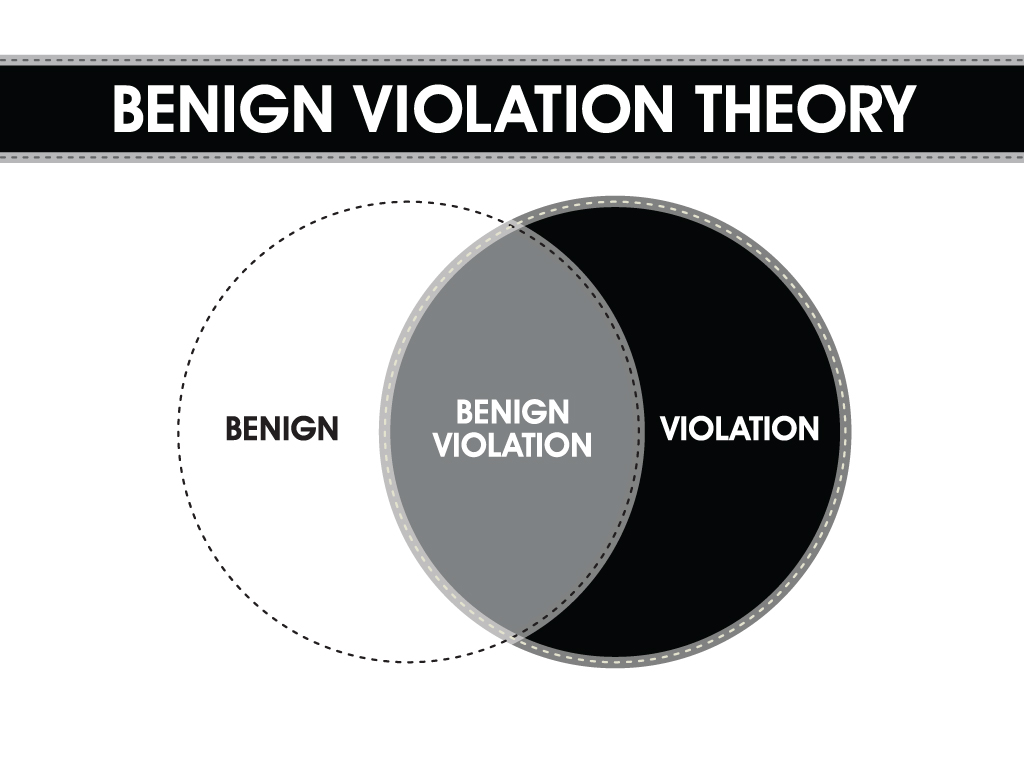Below I introduce the benign violation theory and discuss a paper, Benign violations: Making immoral behavior funny, that Caleb Warren and I recently published in the August 2010 volume of Psychological Science.
The benign violation theory builds on work by Tom Veatch and integrates existing humor theories to propose that humor occurs when and only when three conditions are satisfied: (1) a situation is violation, (2) the situation is benign, and (3) both perceptions occur simultaneously. A violation occurs when a situation threatens the way that you believe the world “ought” to be. Simply put, something seems wrong. Violations take many forms, ranging from tickling and playfighting to the violations of linguistical norms, conventions, and rules that take place in puns.
There are also many ways to make a violation benign. In the paper, we tested three: 1) A violation can seem benign because of a lack of commitment to the violated norm, such as when people who are not religious laugh when a church gives away a Hummer SUV; 2) A violation can seem benign because of distance from the violation, such as when it occurs to someone else, happened long ago, or doesn’t seem real; and 3) A violation can seem benign because of an alternative interpretation, as occurs in the case of playfighting and tickling. The benign violation theory suggests that primates often laugh when play fighting and tickling because both are mock attacks — laughter signals a threatening situation is okay.
McGraw, A.P. & Warren, C. (2010). Benign violations: Making immoral behavior funny. Psychological Science, 21, 1141-1149. LINK
